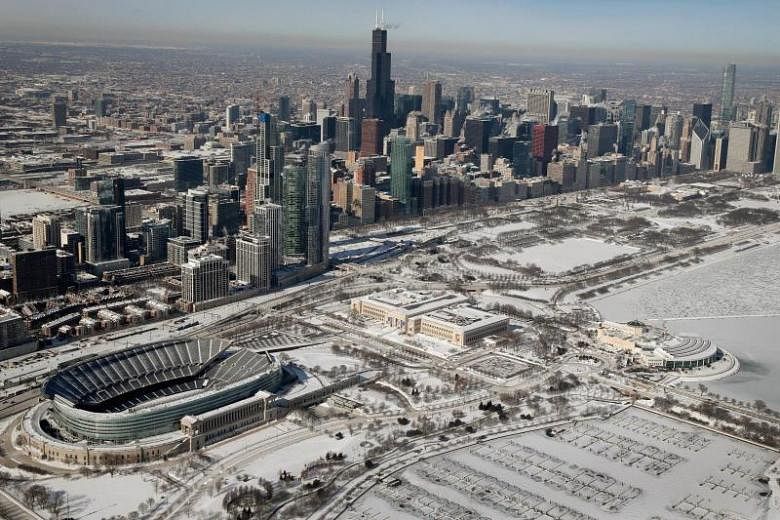CHICAGO (DPA) - Glass-sheathed modern buildings make for spectacular skylines, but they're also bird killers, especially in Chicago.
Each year, thousands of birds die when they smash into large glass windows they can't see. Lights from skyscrapers can also confuse migrating birds, causing them to circle buildings repeatedly and die from exhaustion.
Legislation introduced in the Chicago City Council by alderman Brian Hopkins and reintroduced in the US House of Representatives by Democratic lawmaker Mike Quigley seeks to prevent such deaths by encouraging - and, in some cases, mandating - bird-friendly design.
Proponents say the measures won't add significantly to construction costs. But the Chicago proposal could face opposition from real estate developers, especially those who rely on glass walls and panoramic views to help sell or rent commercial and residential space.
"I think we're all interested in doing what we can to protect the birds during their migration season," said Michael Cornicelli, executive vice-president of the Building Owners and Managers Association of Chicago, which represents most downtown commercial buildings. "I think it's a matter of determining what are the most cost-effective measures to do that."
Veteran Chicago developer J. Paul Beitler had a more pointed response to the proposed legislation, saying on Monday (Feb 11) that there's "a rush to judgment and the assumption that buildings, especially all glass buildings, and birds don't mix".
The proposed Bird Friendly Design ordinance, introduced on Jan 23, is backed by a coalition of groups, including the Chicago Audubon Society, that calls itself Bird Friendly Chicago. Chicago architect Jeanne Gang, long a leader in bird-friendly design, is supporting the effort.
"If we keep environmental impact in mind from the start of the design process, we can create buildings that are functional and aesthetically pleasing, and also bird-friendly," Gang said in a news statement issued by the group.
The idea is to "stop birds from dying with building collisions in Chicago", Chicago landscape architect Ted Wolff, a member of Bird Friendly Chicago, said in an interview. The legislation would apply to large-scale new construction and renovated buildings that require permits. It would not apply to detached homes, townhouses, two-flats or residential buildings with up to six units.
One of its measures would mandate that at least 95 per cent of a building's facade, from the ground to a height of 10.9m, not be sheathed in glass or have bird-safe glass with etching, frosting or mounted elements like screens.
Another item in the proposed ordinance would require that non-essential exterior lighting be automatically shut off between 11pm and sunrise. Interior landscaping should "always" be placed behind bird-friendly exterior glass, the proposal says.
Applying the proposed rules to renovations of existing buildings is a potential sticking point, said Cornicelli, from the building owners group. Typically, it's easier and less expensive to incorporate such measures into new construction, he said.
Since 1995, the group has cooperated with the Lights Out Chicago programme, a city-backed initiative that encourages owners and managers of high-rises to turn off or dim exterior lights during bird migration seasons.
"We have a pretty high rate of compliance," Cornicelli said.
The Chicago Aubudon Society manages the programme, which has saved thousands of birds' lives and reduced building energy and maintenance costs, according to a city website.
Other US cities, like San Francisco, already have bird-safety design rules on the books.
Advocates also point to examples like the new Milwaukee Bucks arena, which has been called the world's first bird-friendly sports arena.
The arena, designed by the global firm Populous, uses a thin ceramic coating on glass, known as fritting, to signal to birds that the glass is a wall to be avoided.
Quigley's legislation, the Bird-Safe Buildings Act, would apply to public buildings constructed, significantly renovated or bought by the US General Services Administration, the federal government's landlord.
It would require that these buildings use bird-safe building materials and design features "to the maximum extent possible," according to a news statement.
"By using materials that conceal indoor lighting to the outside, we can dramatically reduce the frequency of birds colliding with glass buildings," Quigley said in the statement.
This is the fifth time Quigley has introduced such legislation, his staff said. The first time was in 2010.
Aides said the Bill's prospects are improved because Democrats now control the House.

